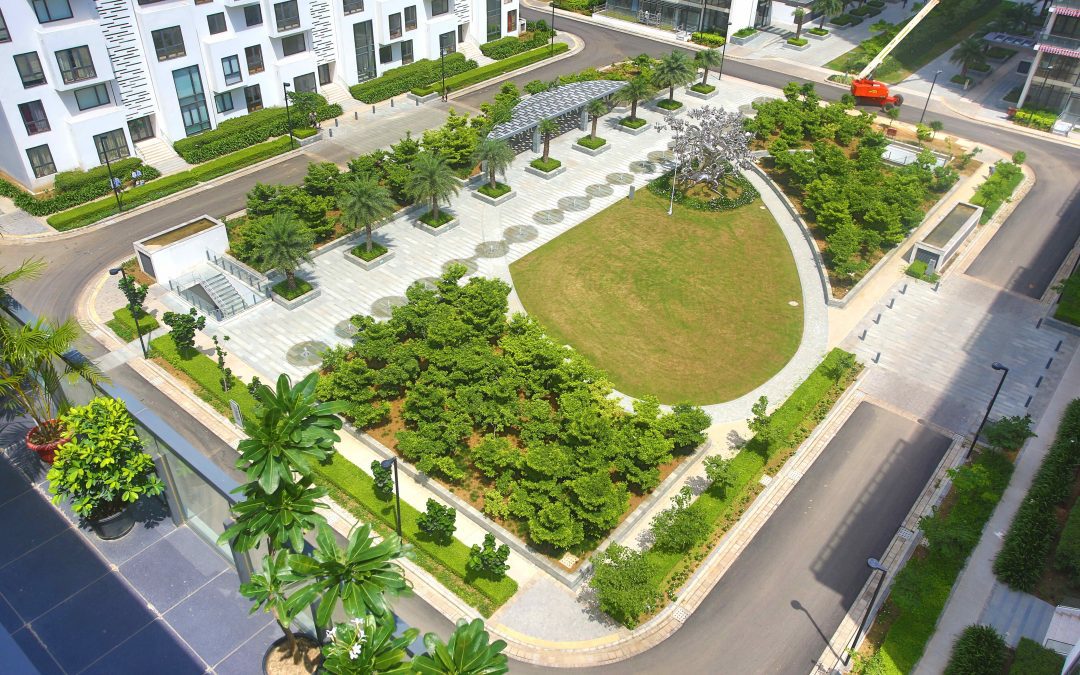THE SIX PRINCIPLES OF BIOPHILIC DESIGN
Biophilic design has become increasingly popular in the last decade, bringing organic and renewable environments in the public landscape, from hospitals to parks to recreational centers and office buildings. Biophilia is the human propensity to associate closely with nature in all forms; bio means life, and philia means love – the love for life.
Biophilic landscaping seeks to boost productivity and the resilience of nature and its people, bringing the idea that we, as humans, have an emotional and sensory connection to natural elements and are influenced by them.
Although biophilic landscaping seems to be a newly adopted practice surging from eco-friendly policies, biophilic design has been seen worldwide in many well-known historical spaces. From the courtyards of the Alhambra in Spain, The Aviary in Teotihuacan, and the Hanging Gardens of Babylon, biophilic design in landscape architecture sets forth the idea that any form of landscaping can coexist with nature and be a sustainable outdoor living space. Biophilia can be used for any future outdoor or indoor living space building project.
The process of schematizing a landscape based on biophilic impression is based on six principles that any landscape architect or designer should implement.
The Six Principles
The purpose of the six principles of biophilic landscape design is so landscape designers can incorporate it into their compositions and create a congruent and fluid space to compliment the area around it. The six principles of biophilic design are:
Environmental features
This principle brings the ecological elements around you together to create a sensory-visual experience and introduce nature-based green spaces into habitable spots. People are naturally drawn to nature and a sense of connection to it can be formed with this technique.
Natural shapes and forms
Using naturally occurring patterns and shapes and predominantly involving them in your landscaping process creates a space people can be tuned into. They mimic the local ecology and do away with right angles and straight lines.
Natural patterns and processes
This principle suggests that a harmonious transition between one space to another, whether by using colors, material, or texture, and visible contrast creates a sensory experience that influences your well-being. It allows for a sense of wholeness with your surroundings.
Light and space
This principle encourages the designer to use naturally occurring light to illuminate spaces and create visual and physical comfort. For example, the use of skylights and pergolas can evoke a dynamic use of lighting and provide the warmth of sunlight, creating diversity and harmoniousness.
Place-based relationships
This principle uses your personal, historical, ecological, or cultural connection to space and incorporates it into a landscape design. It focuses on the ecology and its prominent geographical features and culture, making the design less “monotoneâ€.
Evolved human nature relationships
This focus strives to use the connection between humans and nature to nurture positive feelings like self-esteem, desires for exploration, and attraction to natural spaces. It can bring a sense of safety and protection by the environment around you.
These six principles of biophilic design help incorporate nature into modern landscaping, paving the way for more sustainable and eco-friendly designs that focus on the connections that we, as humans, have with nature and the environment around us. Following the six elements of this type of landscaping will provide a zen, positive, and nurturing environment for those around it.


Recent Comments